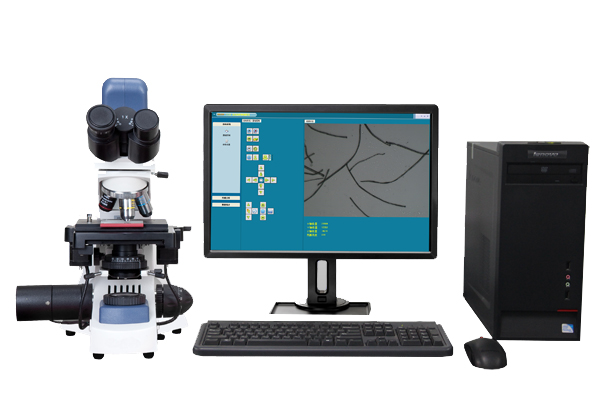Top 10 Fiber Fineness Testing Instruments
Fiber fineness testing is critical in the textile, nonwoven, and fiber production industries. It determines fiber diameter, uniformity, and quality, which directly affect yarn strength, fabric hand-feel, and end-product performance. Fineness testing instruments ensure compliance with international and domestic standards and optimize raw material selection and production control.
Below is a comprehensive list of the Top 10 Fiber Fineness Instruments, including applications, test items, standards, advantages, and limitations.

1. Micronaire Tester (Cotton / Fiber Airflow Method)
Applications: Cotton, blended fibers
Functions: Measures fiber fineness and maturity using air permeability
Test Items: Micronaire value, fiber maturity index
Standards: ASTM D1440, ASTM D1577, ISO 139, GB/T 3070
Pros:
Widely used and standardized
Quick and easy testing
Provides both fineness and maturity assessment
Cons:
Only suitable for cotton and similar fibers
Sensitive to moisture and temperature
2. OFDA (Optical Fiber Diameter Analyzer)
Applications: Cotton, wool, synthetic fibers, nonwovens
Functions: Optical measurement of fiber diameter distribution
Test Items: Fiber diameter, coefficient of variation, uniformity index
Standards: ASTM D5793, IWTO-49
Pros:
Non-destructive, high-precision measurement
Provides diameter distribution profile
Cons:
Expensive equipment
Requires trained operators
3. Uster HVI Fiber Fineness Module
Applications: Cotton and other natural fibers
Functions: Measures fiber fineness, length, strength, and trash content
Test Items: Micronaire/fineness, maturity, fiber length
Standards: ASTM D1440, ISO 139, GB/T 3070
Pros:
Integrated with HVI system for multi-parameter testing
Fast and repeatable
Cons:
High initial investment
Mainly suitable for cotton
4. OFDA 100 / OFDA 2000
Applications: Cotton, flax, wool, synthetic fibers
Functions: Optical measurement of diameter, uniformity, and length
Test Items: Fiber diameter, CV%, fineness profile
Standards: ASTM D5793, ISO 1973, IWTO-49
Pros:
High-resolution optical detection
Can handle multiple fiber types
Cons:
Complex calibration and maintenance
Costly for small labs
5. Airflow Method Fiber Fineness Tester
Applications: Cotton, wool blends, technical fibers
Functions: Measures fineness based on airflow resistance
Test Items: Fiber diameter, micronaire value, maturity
Standards: ASTM D1440, ISO 139, GB/T 3070
Pros:
Simple and fast
Standardized method for cotton fibers
Cons:
Not suitable for very short or synthetic fibers
Affected by environmental factors
6. Micronaire–Digital Type
Applications: Cotton and cotton blends
Functions: Digital display of fiber fineness and maturity
Test Items: Micronaire value, maturity ratio
Standards: ASTM D1440, ISO 139, GB/T 3070
Pros:
Easy-to-read digital interface
Quick testing for large sample batches
Cons:
Limited to cotton fibers
Requires careful calibration
7. Laser Fiber Diameter Analyzer
Applications: Synthetic fibers, technical filaments, wool
Functions: Laser diffraction for precise fiber diameter measurement
Test Items: Fiber diameter, distribution, uniformity
Standards: ISO 9277, ASTM E2651
Pros:
High precision and non-contact
Suitable for fine synthetic fibers
Cons:
Higher cost
Requires careful alignment and sample preparation
8. Wool Fiber Fineness Tester (OFDA / Lasers)
Applications: Wool, alpaca, cashmere
Functions: Optical or laser measurement of fiber diameter distribution
Test Items: Mean fiber diameter, standard deviation, CV%
Standards: IWTO-8, ASTM D1577
Pros:
Non-destructive
Accurate diameter distribution for fine wools
Cons:
Expensive
Not suitable for very short fibers
9. Projection Microscope Fiber Fineness Tester
Applications: Cotton, wool, flax, technical fibers
Functions: Measures fiber diameter by projecting magnified fiber image
Test Items: Fiber diameter, uniformity, cross-sectional analysis
Standards: ISO 3930, ASTM D1440, GB/T 3070
Pros:
Visual confirmation and measurement
Can measure cross-sectional shape
Cons:
Manual and slower
Operator-dependent accuracy
10. Capacitance / Impedance Fiber Fineness Tester
Applications: Cotton, wool, synthetic fibers
Functions: Electrical measurement of fiber linear density and fineness
Test Items: Fiber linear density, micronaire/fineness
Standards: ASTM D1577, ISO 139, GB/T 3070
Pros:
Fast measurement
Good for automated production monitoring
Cons:
Only applicable to certain fibers
Needs calibration for different fiber types
How to Choose the Right Fiber Fineness Instrument
Determine fiber type
Cotton: Micronaire, airflow, HVI module
Wool / Cashmere / Alpaca: OFDA, laser diameter analyzer
Synthetic fibers / filaments: Laser diffraction, projection microscope
Check standards compliance
ISO / ASTM / IWTO / GB/T standards
Critical for export, certification, and lab accreditation
Consider testing speed and throughput
High-volume production → digital or HVI-based testers
Research / quality labs → OFDA, laser, projection microscope
Budget & maintenance
Low-cost → Micronaire, basic airflow method
Mid-cost → Digital micronaire, capacitance tester
High-cost → OFDA, laser fiber diameter analyzers
Why Choose QINSUN
QINSUN specializes in fiber fineness testing instruments for cotton, wool, synthetic, and technical fibers. We provide customized laboratory solutions, global shipping, and professional technical support, ensuring accurate, reliable fiber fineness measurement for R&D, quality control, and production optimization.
2025-11-19 11:14
- Related News
Automatic Cross-Hatch Tester | PV 3952, Ford BN 108-03,GM N 14688 Compliant
Multi-Finger Scratch/Mar Tester | Automotive Plastics & Interior Materials T
Dental Material Color Stability Tester | ISO 4049 / YY 0270 / ASTM G155 Complian
Masks Bacterial Filtration Efficiency (BFE) Tester | YY 0469 / ASTM F2100 / BS E
Smoke Density Tester | ASTM E662 / ISO 5659-2 Compliant
Dry Microbial Penetration Resistance Tester | ISO 22612 / YY/T 0506.5
Dry Fallen Wadding Tester — YY/T 0506.6 | ISO 9073-10 | EN 13795-2
Fogging Tester | Automotive Interior Volatile Fogging Test System
